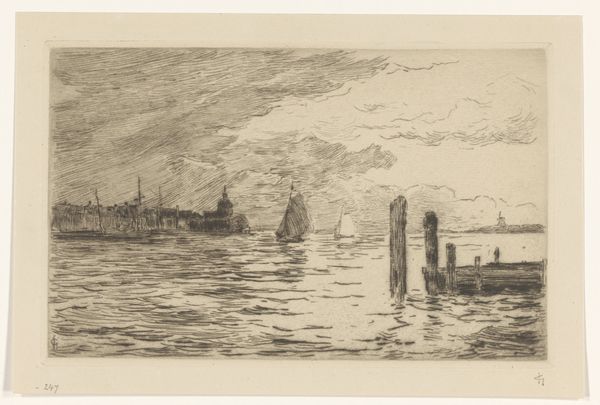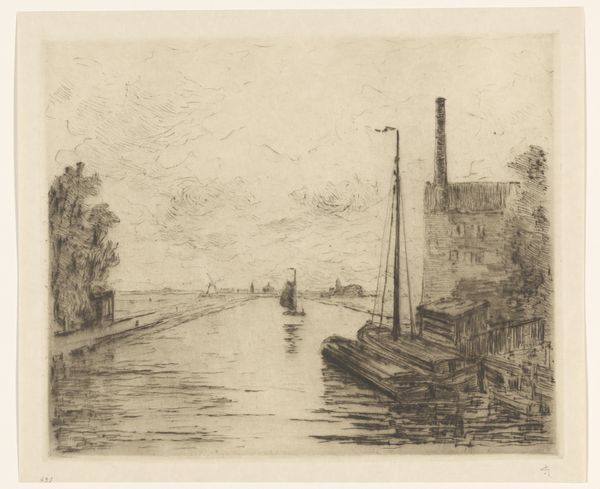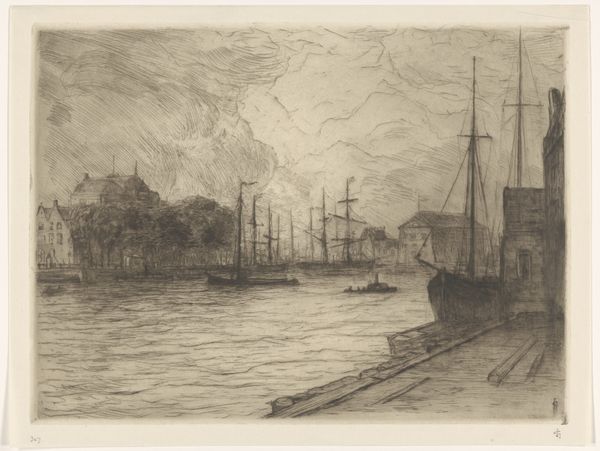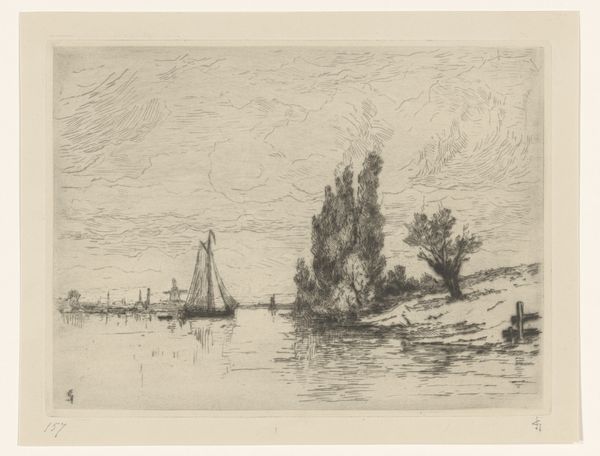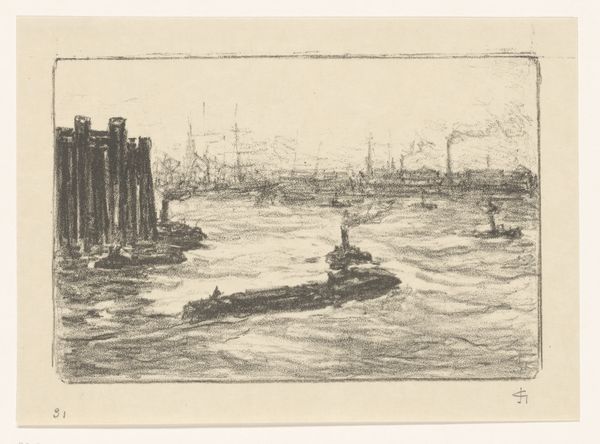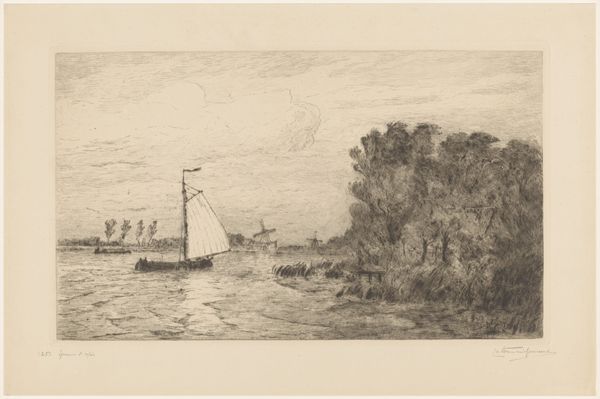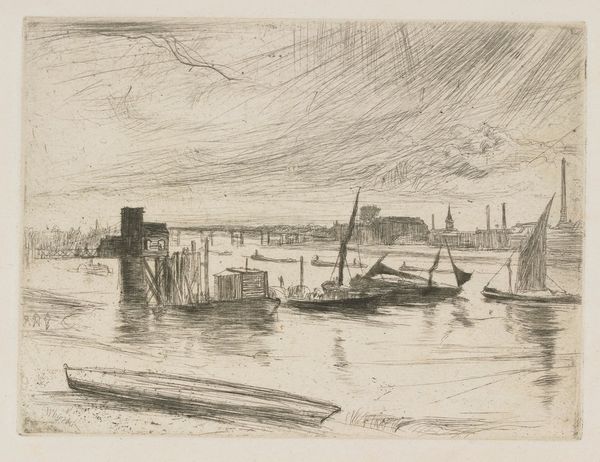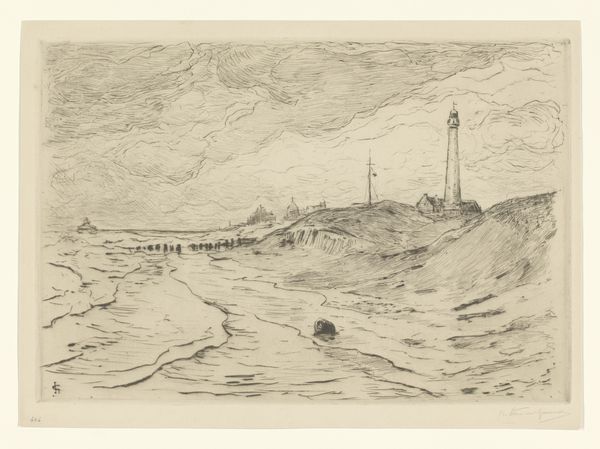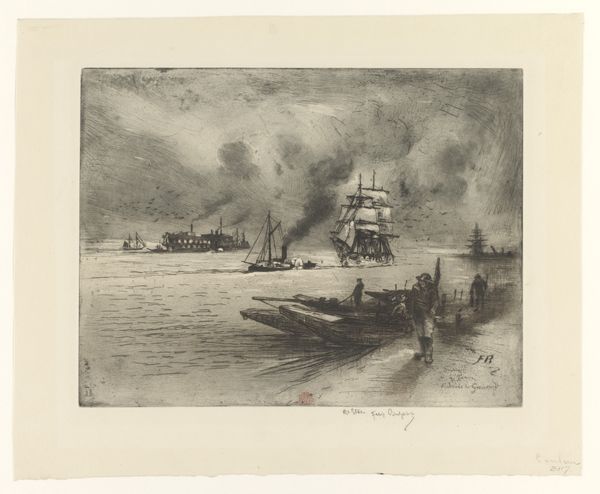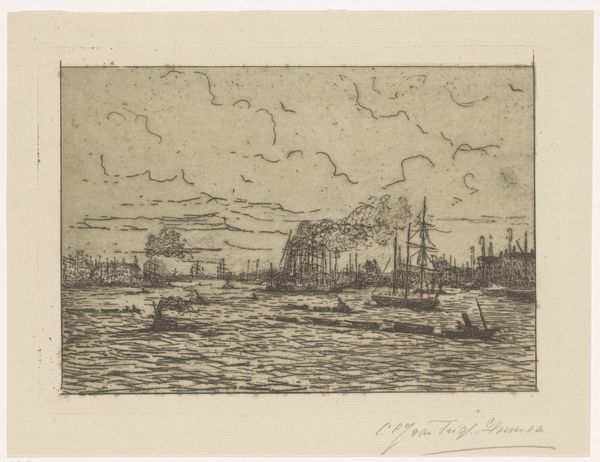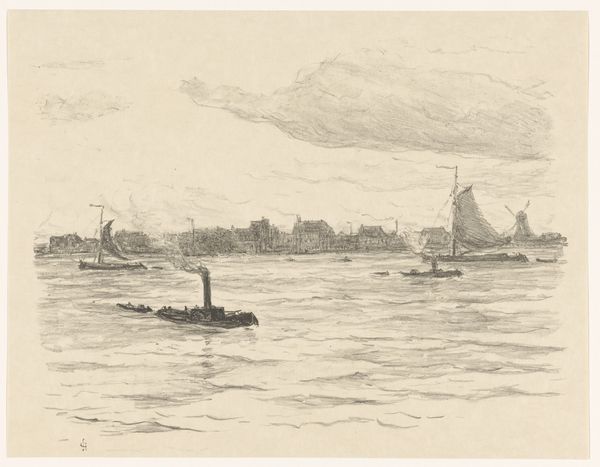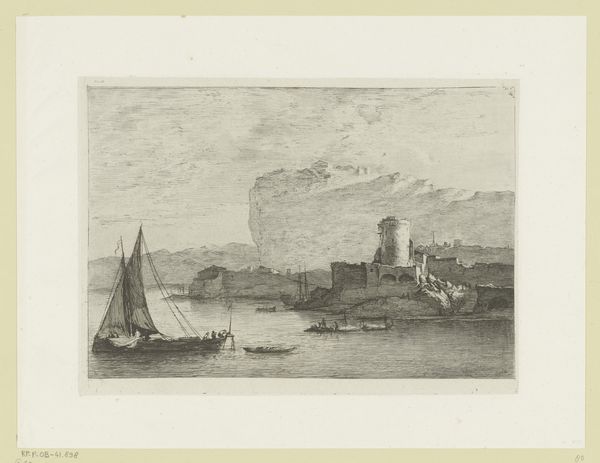
print, etching
#
dutch-golden-age
# print
#
etching
#
landscape
#
etching
#
realism
Dimensions: height 158 mm, width 247 mm
Copyright: Rijks Museum: Open Domain
Editor: Here we have "Sleepboten op de Maas voor Dordrecht" by Carel Nicolaas Storm van 's-Gravesande, created between 1889 and 1902. It’s an etching, a type of print. The smokestacks feel so prominent to me; they add a gritty industrial feel, but I'm curious about how that plays into the broader narrative of this landscape. What story do you see unfolding here? Curator: This etching, while seemingly a simple landscape, is deeply embedded in the societal shifts of its time. The industrial imagery, those smokestacks you pointed out, clashes, yet coexists, with the natural river scene. It makes me think about progress and its cost, specifically considering class and labor. What do you think the artist might be saying about the working class of Dordrecht? Editor: That's interesting, I hadn't really thought about the figures on the tugboats themselves, it seems to humanize what at first I read as cold industry. They're working, navigating this changing world. Curator: Exactly. And we must also consider the position of the Maas in relation to the development of global trade networks in the 19th Century. The industrialization altered the environment of Dordrecht, affecting lives, traditions, and the very fabric of society. The depiction of these ships, are they celebrating new commercialism, or bemoaning it? Editor: So, it's not just a pretty picture; it's about this complicated relationship between humans, industry, and the environment during a period of intense change? Curator: Precisely! We have to always acknowledge these forces to get the complete story and apply our modern perspective. This way it creates discussion about how society can move forward to improve. What does this make you think about current environmental activism? Editor: I'll be sure to now. That tension adds so much depth. I learned a lot from the approach you’re using that makes an artwork meaningful. Curator: Absolutely. I’m just glad I can get you to use the perspective that looks into a range of interdisciplinary backgrounds for social implications that are the most useful for discussion in the arts!
Comments
No comments
Be the first to comment and join the conversation on the ultimate creative platform.
